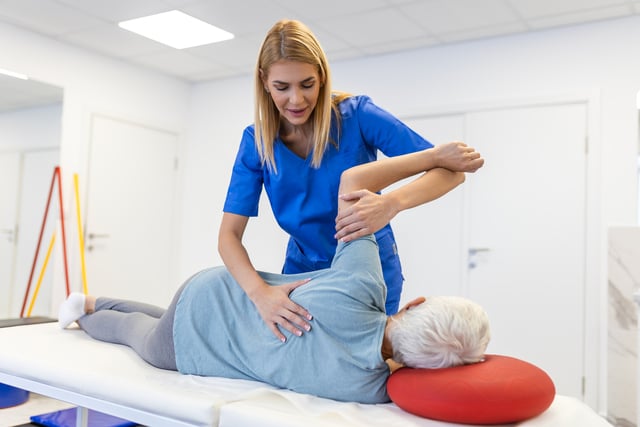
When most people think about preparing for physical therapy, they focus on the exercises, treatment plan, or upcoming milestones. Yet, one overlooked element can make or break your session: what you wear. According to the U.S. Bureau of Labor Statistics, over 34,000 licensed physical therapists work across the country, treating millions of patients each year. With so many patients cycling through therapy programs, the right clothing becomes more than a convenience—it’s a practical necessity for comfort, performance, and recovery.
This article explores why your outfit matters more than you think in physical therapy, breaking down clothing choices for different treatment areas, footwear considerations, and even special guidance for virtual sessions. By the end, you’ll understand how simple wardrobe adjustments can help you get the most out of every session.
The Connection Between Clothing and Therapy Outcomes
Physical therapy is about restoring mobility, strength, and balance. To achieve this, therapists need to see how your body moves and, in some cases, access the area being treated. Ill-fitting or restrictive clothing can get in the way, slowing progress and even forcing therapists to modify exercises.
Choosing the right clothing enhances three things:
- Freedom of movement – Your clothes should move with you, not against you.
- Therapist accessibility – Joints, muscles, and the affected body area should be visible and easy to evaluate.
- Patient comfort – When you feel comfortable, you perform exercises with greater confidence and consistency.
The right physical therapy attire supports each of these pillars, turning your outfit into an essential part of your recovery plan.
What to Wear for Different Therapy Areas
Every injury or condition targets a specific region of the body, which means your clothing needs may vary. Here are some region-specific recommendations that help maximize treatment effectiveness.
Back and Shoulders
Loose t-shirts, tank tops, or sports bras work best for upper-body therapy. These allow therapists to observe posture, shoulder mechanics, and spinal alignment. Avoid stiff fabrics or button-down shirts that limit reach.
Hips and Lower Back
Elastic shorts, yoga pants, or track pants are ideal. These make it easier for therapists to access hip joints and monitor core alignment without tugging at waistbands or adjusting layers.
Knees and Ankles
Shorts are the gold standard for leg therapy, but if you prefer pants, choose ones with wide or stretchy openings that can roll up past the knee. Skirts or tight jeans are a poor choice, as they limit range of motion and block visibility.
Footwear: The Foundation of Movement
Shoes are often overlooked, but they play a critical role in therapy outcomes. The best footwear is supportive, stable, and designed for movement.
- Best options: Athletic sneakers with flat soles and good grip.
- What to avoid: Heels, sandals, flip-flops, and boots, all of which can destabilize balance and reduce movement control.
- Barefoot or socks: Depending on the exercise, some sessions may involve working without shoes. Clean, cushioned socks are recommended if shoes need to come off.
Good footwear doesn’t just protect your feet—it influences your balance, gait, and the way your body distributes weight during therapy.
Beyond Comfort: Why Details Matter
It’s easy to assume “comfortable clothes” are enough, but subtle details can transform your therapy experience:
- Hair and accessories: Tie back long hair so it doesn’t interfere with exercises or equipment. Minimize jewelry, which can snag or restrict therapist access.
- Fabric choices: Choose breathable, sweat-wicking fabrics that keep you cool through repetitions. Cotton, while soft, can trap moisture during longer sessions.
- Layering: Since clinics may vary in temperature, layers let you adjust on the fly. A lightweight jacket or pullover can be removed after warm-ups.
These adjustments may feel small, but together they create a seamless therapy session where the only focus is your recovery.
Virtual Physical Therapy: Dressing for Telehealth
Telehealth physical therapy sessions have surged in popularity, offering patients convenient access to care from home. But just because you’re not walking into a clinic doesn’t mean clothing doesn’t matter.
For video-based therapy:
- Wear form-fitting but flexible clothes so your therapist can see joint alignment and muscle movement on camera.
- Avoid baggy clothing that obscures your body’s lines.
- Ensure your space has enough room for movement, and wear shoes or socks suitable for a non-slip surface.
Virtual therapy demands the same preparation as in-person sessions, with one extra twist: visibility is key for accurate assessments.
Common Mistakes to Avoid
Even well-intentioned patients sometimes choose outfits that create problems. Here are common pitfalls to watch out for:
- Wearing jeans or stiff fabrics that limit bending.
- Choosing clothes that constantly need readjusting (like oversized sleeves).
- Forgetting that your treatment area should be accessible (e.g., wearing long pants to a knee rehab session).
- Bringing inappropriate shoes that compromise stability.
These small missteps can add frustration and reduce the efficiency of your session.
How Proper Attire Builds Confidence
Your outfit doesn’t just support physical performance—it also affects mindset. Walking into therapy prepared signals that you take recovery seriously. Patients often feel more confident, motivated, and willing to push through challenges when dressed appropriately. Therapists also appreciate not having to work around clothing barriers, allowing them to dedicate more energy to guiding progress.
Think of clothing as gear: just as athletes wear uniforms to optimize performance, patients benefit from gear tailored for therapy.
Practical Checklist for Physical Therapy Attire
Before your next session, ask yourself:
- Can I move freely in this outfit without restriction?
- Will my therapist have easy access to the treatment area?
- Are my shoes supportive and stable?
- Am I comfortable enough to focus on exercises without distraction?
If you can answer “yes” to all, you’ve chosen wisely.
Conclusion
Physical therapy is a journey that demands consistency, patience, and active participation. The clothing you wear might seem minor, but it influences comfort, accessibility, and even motivation. By choosing breathable fabrics, supportive footwear, and garments designed for flexibility, you create the best possible environment for recovery.
Your physical therapy attire is not just about style—it’s about function, safety, and progress. Treat your outfit as part of your therapy plan, and you’ll discover how much smoother the road to recovery can be.
Disclaimer
The information contained in South Florida Reporter is for general information purposes only.
The South Florida Reporter assumes no responsibility for errors or omissions in the contents of the Service.
In no event shall the South Florida Reporter be liable for any special, direct, indirect, consequential, or incidental damages or any damages whatsoever, whether in an action of contract, negligence or other tort, arising out of or in connection with the use of the Service or the contents of the Service. The Company reserves the right to make additions, deletions, or modifications to the contents of the Service at any time without prior notice.
The Company does not warrant that the Service is free of viruses or other harmful components












